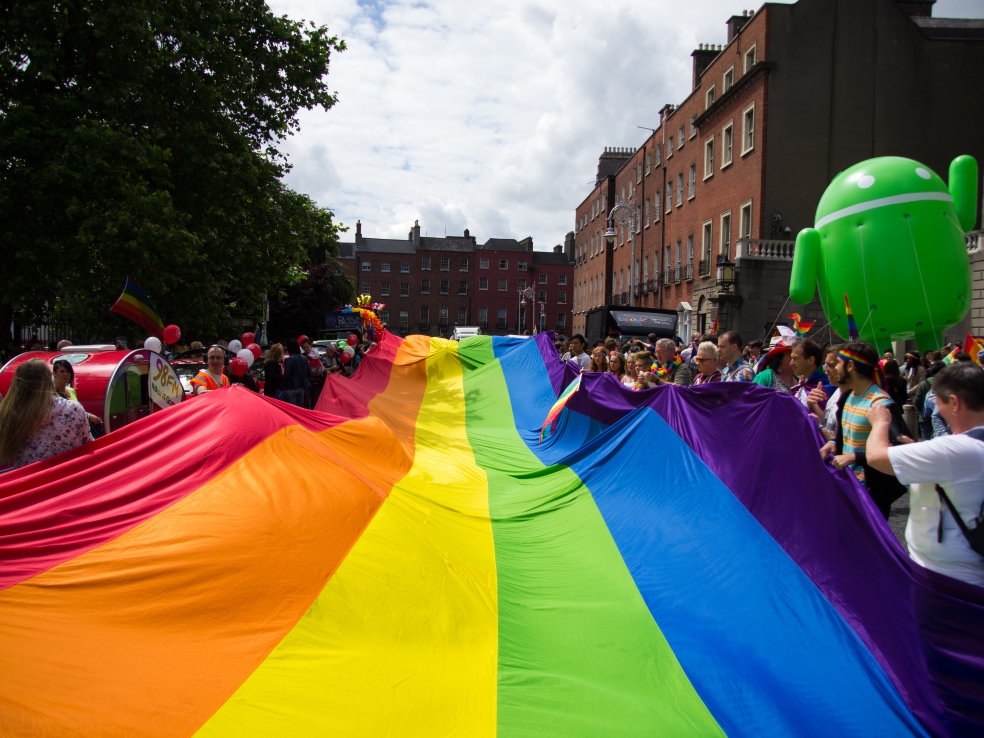I choose to do my video on digital activism and offer an insight into slacktivism, with a secondary focus on the infinite opportunities that the online world has opened up. I am interested in the social movement trends that sweep across the digital plane and to what extent they have been successful, and how much is owed to those actions that take mere seconds but are done by millions worldwide. In saying that though, the real inspiration for my video was The Disability March their unique and innovative concept.
The Creative Commons material I used benefited my video. I used a crowd shot of an unknown protest to open my video, instantly the viewer knows the topic. The music I used was Creative Commons and is not a strong song but it brings in something upbeat and calm in the background. All images that were used were also Creative Commons and I felt that showing images of the Womens March while discussing The Disability March cemented that the online blog really was part of the march, and that all of the individuals who participated online did so just as much as those who could physically attend. All other content was made by me, I filmed the video of myself and used that, I felt that seeing me speak would be the best way to validate what I was saying. I filmed my video outside as it gave some interest to the background but was very neutral and did not distract from myself or my speech.
I was very unsure of how to include my scholarly references in a natural way when speaking to the camera. I ended up using them mostly to define terms where it was crucial that the audience had a proper comprehension of in order to get the most from my video. In my video I simply embeded the quote in my speech and acknowledged who said it and where.
My video making process was relatively hassle free, I had used the weekly challenges to familiarise myself with everything.The only difficulties I had were due to extreme heat on my dedicated filming day, and propping my phone in a safe and stable location that could be sustained for several hours. To combat the heat I set up under the shade of a tree and filmed in the afternoon once the forecasted daily high had passed. In terms of the camera situation, I purchased a cheap small tripod to hold my phone steady and had this stacked on top of household belongings. It wasn’t very professional but it gave me a steady and consistent picture. Although I had few issues take me off guard I have come out of this project having learned a lot. I have built my confidence in a medium that was brand new to me and that I was previously very nervous of. I now feel comfortable using Creative Commons material in a real world way and am in awe of the range of content that is available for use in an ethical way, there are so many options it took hours to find one that was just right. The big take home for me has been the confidence to try new things and use trial and error in a real world way, to go into something blindly and see what works and what doesn’t. It really has been a highly rewarding assignment for me.
Broader class participation- see Tiffit tally
References/Credits
Scholarly
Carty, V 01-27-2015, Social Movements and New Technology, Westview Press pp. 7
Christensen, H 2012, ‘Simply Slacktivism? Internet participation in Finland’, in eJournal of eDemocracy & Open Government VOL4, ISS1, Danube-University Krems pp.1
Tilly, C, Wood, L, 2016, Social Movements 1768-2012, Taylor and Francis Group, London pp. 14
Music
Inspiring Ambient – nemmusic.net (CC BY-ND 3.0)
Opening Footage
May Day March! By Jason Eppink flikr (CC2.0)
Images
Image one: L1003212-Edit By Guido van Nispen Flickr (CC2.0)
Image two: L1003091-Edit By Guido van Nispen Flickr (CC2.0)
Image three: L1003062-Edit By Guido van Nispen Flickr (CC2.0)
Image four: L1003183-Edit By Guido van Nispen Flickr (CC2.0)
Image five: Womens March 15 By Richard Ha Flickr (CC2.0)
Image six: We Wont Give Up By Richard Ha Flickr (CC2.0)
Image seven: L1003124-Edit By Guido van Nispen Flickr (CC2.0)
Image eight: L1003135-Edit By Guido van Nispen Flickr (CC2.0)
Image nine: Nasty Women By Lenny Lloyd da Silva Flicker (CC BY-ND 2.0)
Image ten: Womens March Boston 2017 By Amanda Flicker (CC BY-ND 2.0)
Image eleven:Womens March Boston 2017 By Amanda Flicker (CC BY-ND 2.0)
Image twelve: Womens March Boston 2017 By Amanda Flicker (CC BY-ND 2.0)
Image thirteen: Womens March New Orleans 2017 By Antrel Williams
Image fourteen:Too Early By Lenny Lloyd da Silva Flicker (CC BY-ND 2.0)
Image fifteen: We are the noisy !!! By Lenny Lloyd da Silva Flicker (CC BY-ND 2.0)
Image sixteen:Womens March Los Angeles, CA 2017 By [DV8] David Patrick Valera Flickr (CC2.0)
Image seventeen: Anti Trump Womens March London Womens March January 21 2017 (8) By David Holt Flickr (CC2.0)
Image eighteen: March 6 By Richard Ha Flickr (CC2.0)
Image nineteen: Anti Trump Womens March London Womens March January 21 2017 (30) By David Holt Flickr (CC2.0)
